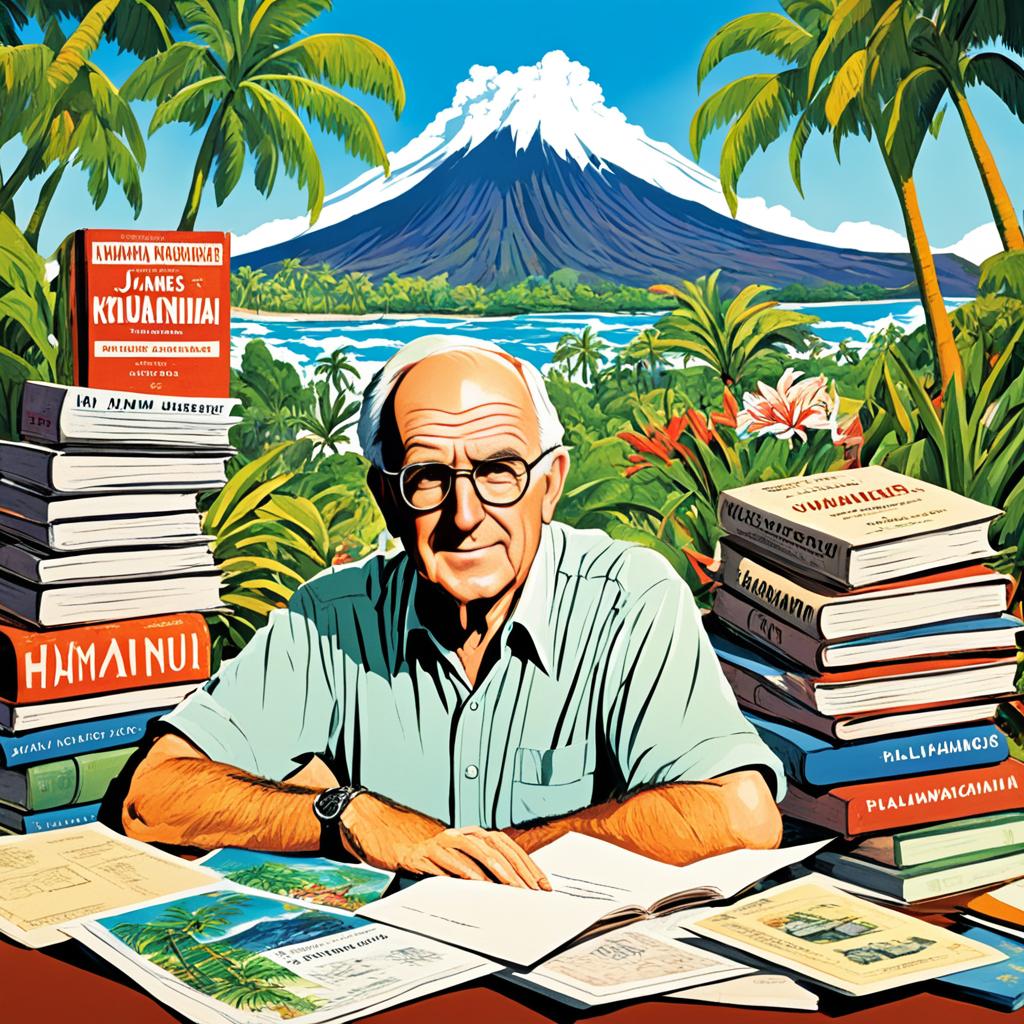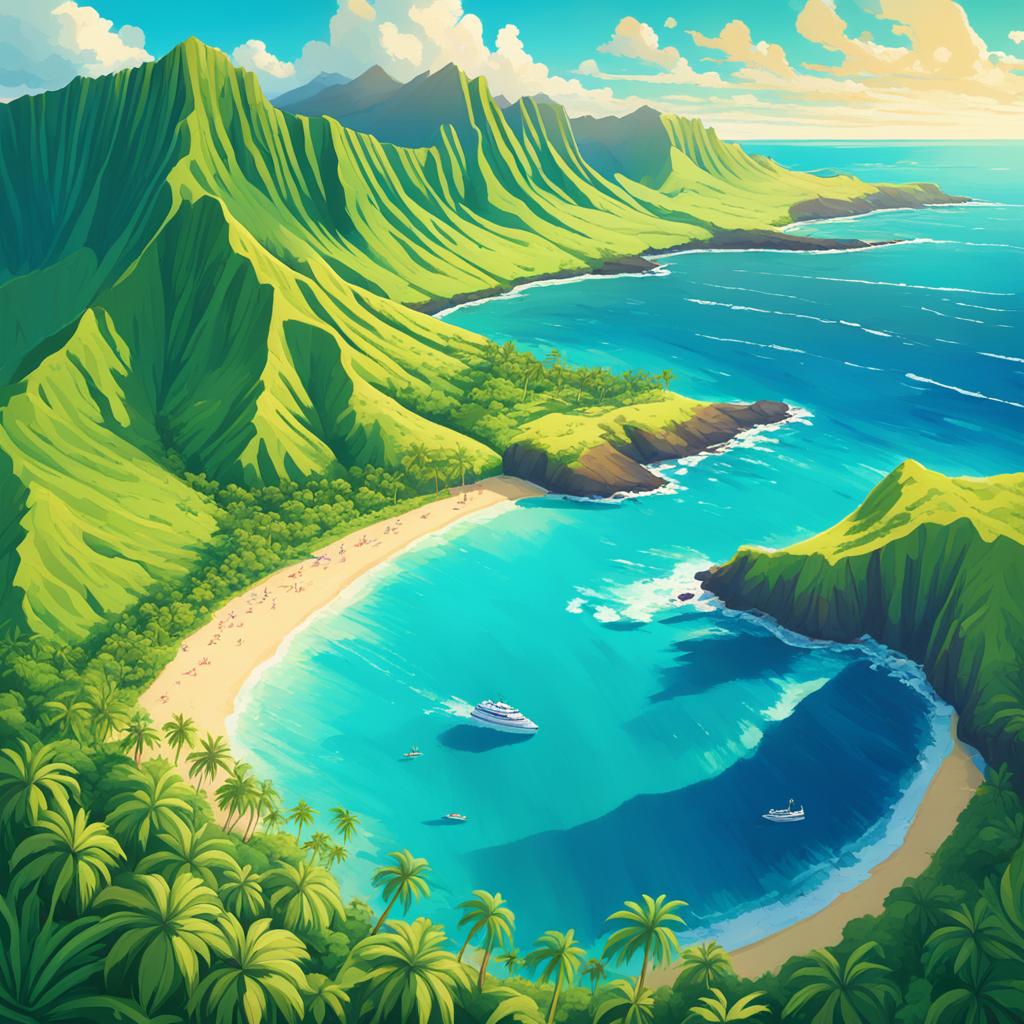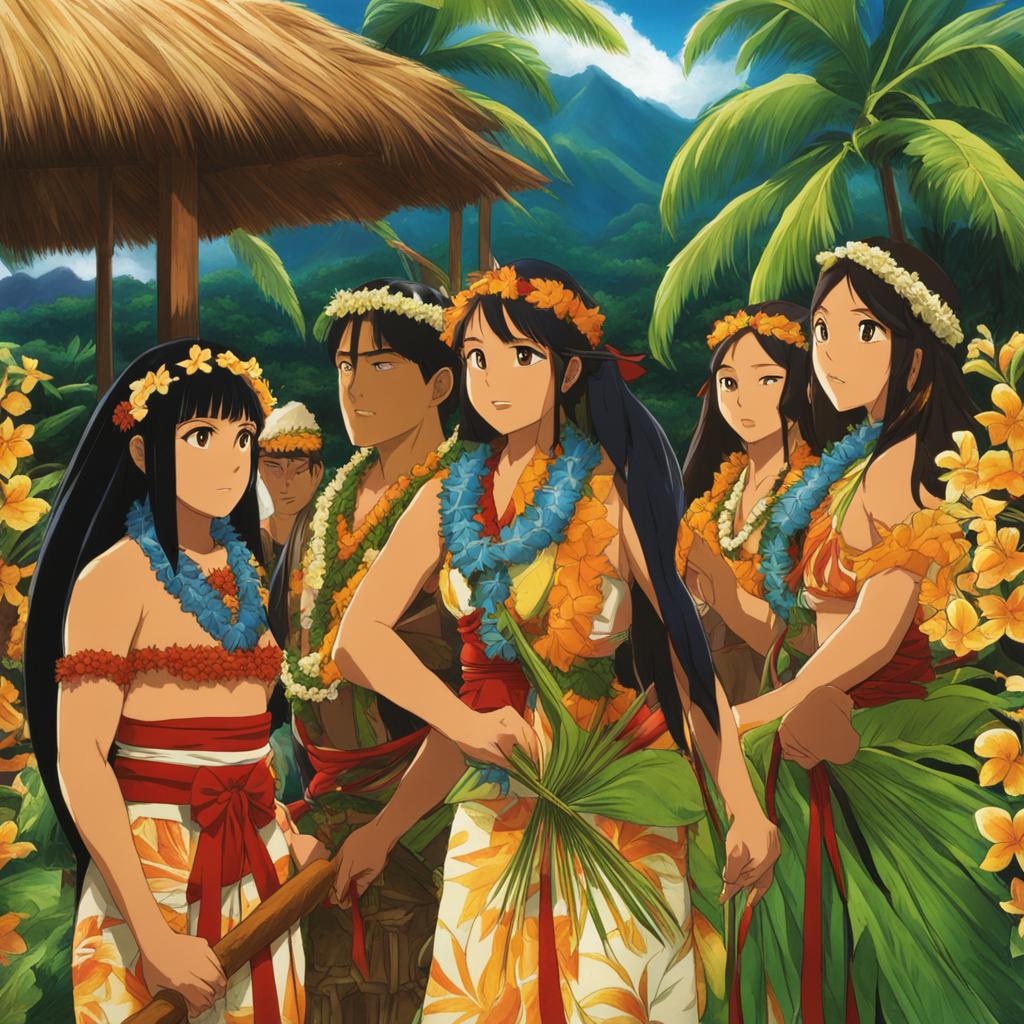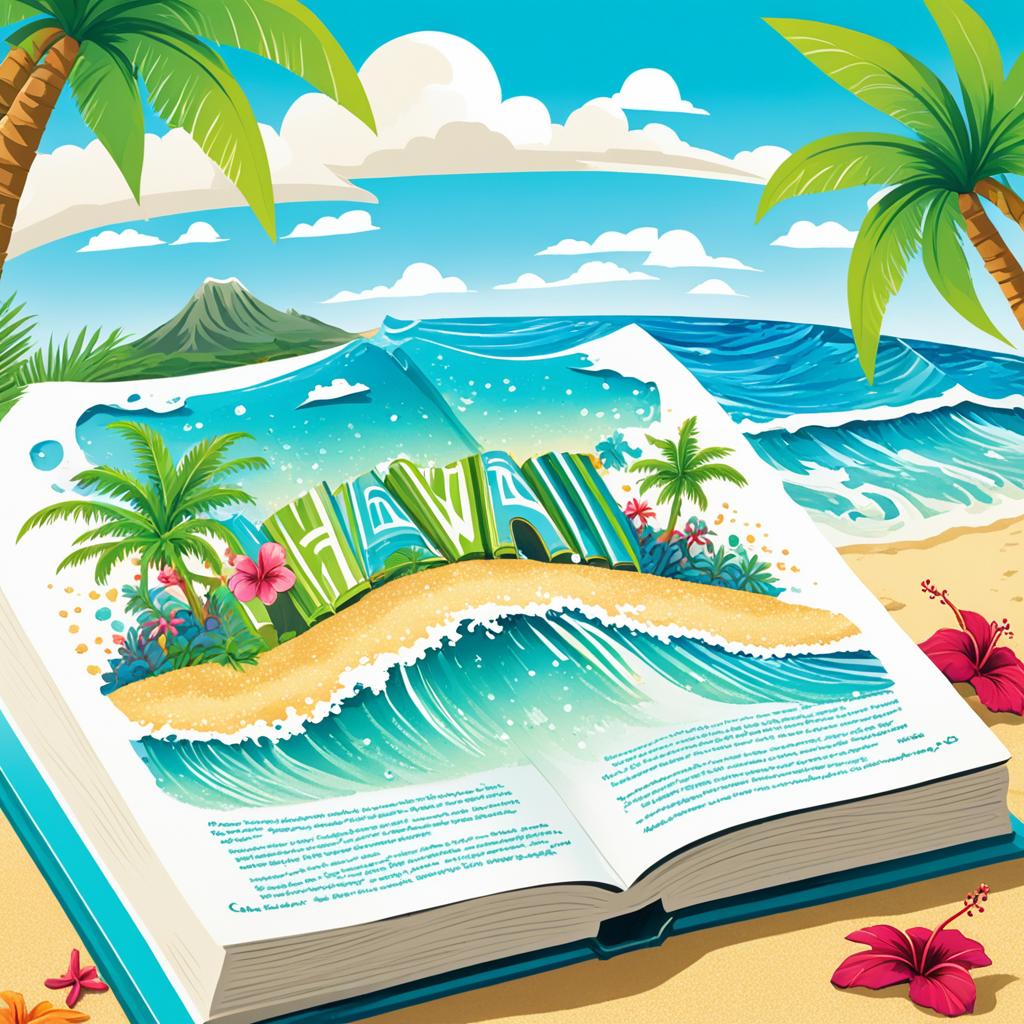When it comes to historical fiction, readers often wonder how much of the story is based on reality and how much is purely fictional. And the same applies to the popular novel “Hawaii” by James A. Michener. Is this captivating tale of the Hawaiian Islands a true story?
Published in 1959, “Hawaii” delves into the rich history of these breathtaking islands, from their ancient formation to the mid-1950s. It takes us on a journey through the lives of the original Hawaiian inhabitants, American missionaries and merchants, and Chinese and Japanese immigrants.
But amidst the riveting narrative, one question lingers: Does “Hawaii” accurately represent Hawaii’s past, or is it purely a work of fiction?
The Development of “Hawaii”

In the development of the novel “Hawaii,” James Michener’s dedication to thorough research shines through. Recognizing the importance of authenticity, Michener sought the expertise of prominent specialists in various fields relating to Hawaiian culture, history, and natural elements. Through extensive consultations and collaborations, he meticulously shaped the narrative to accurately depict the essence of Hawaii.
One of the key contributors to Michener’s research was Clarice B. Taylor, a Hawaiian scholar who served as his technical advisor. Taylor’s extensive knowledge of Hawaiian customs, language, and culture proved invaluable in ensuring the novel’s cultural accuracy. This collaboration allowed Michener to capture the rich tapestry of Hawaiian traditions and portray them with authenticity.
While “Hawaii” is a work of fiction, Michener’s commitment to research and historical accuracy is evident throughout the novel. By incorporating his findings into the storytelling process, he successfully transports readers to the vibrant and evocative world of Hawaii. Michener’s research encompassed various aspects, including Hawaiian history, volcanic activity, botanical details, the pineapple industry, and Chinese culture.
The acquired knowledge lends depth to the characters and landscapes portrayed, further immersing readers in the cultural richness of Hawaii. Although the storyline features fictional characters, Michener drew inspiration from real individuals in history. Notable examples include the portrayal of missionary Hiram Bingham I and Chinese businessman Chinn Ho.
The fruits of Michener’s dedicated research are evident in the vivid and authentic portrayal of Hawaii’s history and people in “Hawaii.” Through his storytelling prowess, the novel captivates readers and offers a glimpse into the mesmerizing tapestry of Hawaiian culture.
In the novel “Hawaii,” James Michener’s extensive research allows readers to delve into the vibrant history and cultural tapestry of the Hawaiian Islands.
The Plot of “Hawaii”

The plot of “Hawaii” takes us on a captivating journey through the history of the Hawaiian Islands, as experienced by diverse ethnic and cultural groups. Each chapter of the novel offers a unique perspective, shining a light on the arrival and struggles of different communities. From the original Pacific Islanders who established the foundations of Hawaiian society to the New England missionaries who brought their beliefs and values, and the Chinese and Japanese immigrants who contributed to the growth of the islands, “Hawaii” beautifully depicts the rich tapestry of cultures that shaped the Hawaiian archipelago.
James A. Michener’s novel explores the experiences of these groups as they navigate the challenges and opportunities presented by the unique environment and socio-political landscape of the Hawaiian Islands. With each chapter, readers witness distinct cultural traditions, value systems, and the impact of immigration on the islands’ development.
Episodic Narrative and Historical Significance
The episodic format of “Hawaii” allows for a comprehensive exploration of the island’s history, spanning centuries and covering significant events. From the overthrow of the Kingdom of Hawaii in 1893 to the devastating bombing of Pearl Harbor in 1941, the novel captures pivotal moments that shaped the destiny of the Hawaiian Islands.
By intertwining the stories of diverse ethnic and cultural groups, “Hawaii” provides readers with a deep understanding of the complexities and nuances of Hawaiian history. It sheds light on the struggles, triumphs, and resilience of these communities, highlighting their contributions to the development of the islands.
| Ethnic and Cultural Groups | Significant Contributions |
|---|---|
| Pacific Islanders | Establishment of Hawaiian society, culture, and traditions |
| New England Missionaries | Introduction of Christianity, education, and American influence |
| Chinese Immigrants | Contributions to the sugarcane and pineapple industries, cultural diversity |
| Japanese Immigrants | Significant labor force, agricultural innovations, cultural blending |
Through its powerful storytelling, “Hawaii” bridges the gap between the past and present, immersing readers in the cultural tapestry of the Hawaiian Islands. It fosters a deeper appreciation for the complexities of immigration, identity, and the interplay between ethnic groups that have shaped the unique character of Hawaii.
Cinematic Adaptations of “Hawaii”
“Hawaii,” the acclaimed novel by James A. Michener, has been brought to life through two cinematic adaptations. With their stunning visuals and captivating storytelling, these films offer a unique audiovisual experience that complements the written narrative.
The first film adaptation, titled “Hawaii,” was released in 1966 and features the talented duo of Max von Sydow and Julie Andrews. This cinematic masterpiece focuses on the third chapter of the original novel, “From the Farm of Bitterness,” which vividly portrays the arrival of the first American missionaries to the enchanting island kingdom.
The second film adaptation, “The Hawaiians,” hit the big screen in 1970 and stars the legendary Charlton Heston. This cinematic gem covers subsequent chapters of the novel and delves into the arrival of Chinese and Japanese immigrants, as well as the growth of the plantations. The film beautifully showcases the dynamic cultural tapestry and rich historical background of the Hawaiian Islands.
Both film adaptations pay homage to James Michener’s remarkable storytelling as they skillfully bring to life pivotal moments and themes from the novel. Through their visual splendor and compelling performances, these films provide a visual feast for the senses and serve as a gateway to Hawaii’s captivating history and cultural heritage.
| Film Title | Release Year | Main Cast | Focus |
|---|---|---|---|
| Hawaii | 1966 | Max von Sydow, Julie Andrews | Arrival of the first American missionaries |
| The Hawaiians | 1970 | Charlton Heston | Arrival of Chinese and Japanese immigrants, growth of plantations |
Reception and Criticism of “Hawaii”

“Hawaii” by James Michener is widely regarded as one of his greatest literary achievements. The novel’s epic scope and meticulous research have earned it critical acclaim and a dedicated readership. Michener’s commitment to historical accuracy is evident throughout the book, as he delves into the rich tapestry of Hawaii’s past. However, the novel has also garnered some criticism for its incorporation of fictional elements alongside historical facts.
While Michener aimed to provide an accurate portrayal of Hawaii’s history, he occasionally took creative liberties to enhance the narrative. Some details may be fictionalized or based on folklore rather than strict anthropological or archaeological evidence. This fusion of fact and fiction has led to debates among scholars and readers about the novel’s historical authenticity.
Nevertheless, “Hawaii” remains a beloved and influential work of literature. It captures the essence of Hawaii’s history and culture, immersing readers in a vivid and immersive reading experience. Michener’s meticulous research, combined with his storytelling prowess, creates a compelling narrative that transports readers to the enchanting world of the Hawaiian Islands.
Historical Accuracy in “Hawaii”
To better understand the blend of historical accuracy and fictional elements in “Hawaii,” let’s explore some key aspects:
| Historical Accuracy | Fictional Elements |
|---|---|
| The novel incorporates extensive research on Hawaiian history and culture. | Some characters and events may be fictionalized or inspired by folklore. |
| Michener consulted experts to ensure accuracy on various subjects, such as volcanoes, botany, and Chinese culture. | The narrative weaves these facts into a fictional storyline, connecting the lives of diverse characters. |
| The book explores significant historical events, such as the overthrow of the Kingdom of Hawaii and the bombing of Pearl Harbor. | The perspectives of fictional characters provide a lens through which readers experience these events. |
By blending historical accuracy with fictional elements, Michener brings Hawaii’s history to life, capturing the reader’s imagination while providing insights into the diverse cultures and people that shaped the islands.
Capturing the Essence of Hawaii
“Hawaii” is a breathtaking novel that beautifully captures the essence of Hawaii, from its lushness and tropical flora to its vibrant Aloha spirit. With vivid descriptions of the islands’ landscapes and the interplay between land and ocean, James Michener transports you to the enchanting world of Hawaii, immersing you in its natural beauty.
Through the pages of “Hawaii,” you will discover the diverse plant and animal life that inhabit the islands, experiencing the richness of its tropical flora firsthand. Michener’s meticulous attention to detail paints a vivid picture of Hawaii’s vibrant ecosystems, allowing you to envision the colorful flowers, towering palm trees, and cascading waterfalls that define the island paradise.
But “Hawaii” goes beyond mere physical descriptions. It delves into the unique customs and traditions of the Hawaiian people, introducing you to the mesmerizing art of hula dancing and the profound concept of Aloha spirit. This spirit, rooted in love, compassion, and harmony, permeates every facet of Hawaiian culture, and Michener’s portrayal of it brings forth a deeper understanding of the values cherished by the Hawaiian community.
Ultimately, “Hawaii” serves as a literary gateway to experiencing the magic and allure of the Hawaiian Islands. It beckons you to explore the vibrant landscapes, immerse yourself in the rich tapestry of cultures, and embrace the Aloha spirit that makes Hawaii truly one of a kind. Whether you have visited Hawaii before or are dreaming of traveling there someday, reading “Hawaii” will undoubtedly deepen your connection to this remarkable place, leaving you with a profound appreciation for its natural beauty and cultural traditions.
FAQ
Q: Is “Hawaii” based on a true story?
A: While “Hawaii” is a fictional novel, it is based on extensive research of Hawaiian history by author James A. Michener.
Q: What research did James Michener conduct for “Hawaii”?
A: James Michener consulted experts on Hawaiian history, volcanoes, botany, pineapples, and Chinese culture. He also worked closely with Hawaiian scholar Clarice B. Taylor to gain insights into Hawaiian customs, language, and culture.
Q: What is the plot of “Hawaii”?
A: “Hawaii” follows the history of the Hawaiian Islands through the perspectives of various characters representing different ethnic and cultural groups. Each chapter focuses on the arrival and experiences of a different group of people, covering significant events in Hawaiian history.
Q: Have there been any film adaptations of “Hawaii”?
A: Yes, “Hawaii” has been adapted into two films: “Hawaii” (1966) and “The Hawaiians” (1970). These films bring to life key moments from the novel’s narrative, showcasing the cultural richness of Hawaii’s history.
Q: How has “Hawaii” been received by readers?
A: “Hawaii” is considered one of James Michener’s best works, known for its epic scope and meticulous research. However, it has also faced some criticism for blending historical facts with fictional elements.
Q: What does “Hawaii” capture about the essence of Hawaii?
A: “Hawaii” captures the natural beauty, cultural diversity, and vibrant spirit of the Hawaiian Islands. It vividly describes the lush landscapes, diverse flora and fauna, and explores the unique customs and traditions of the Hawaiian people.
